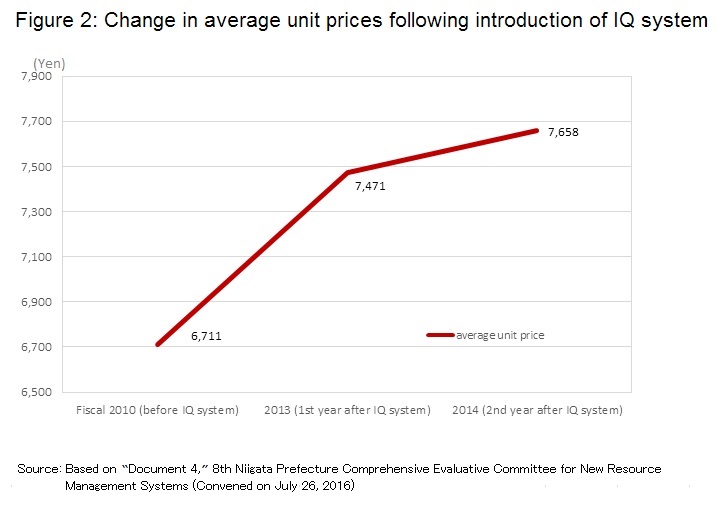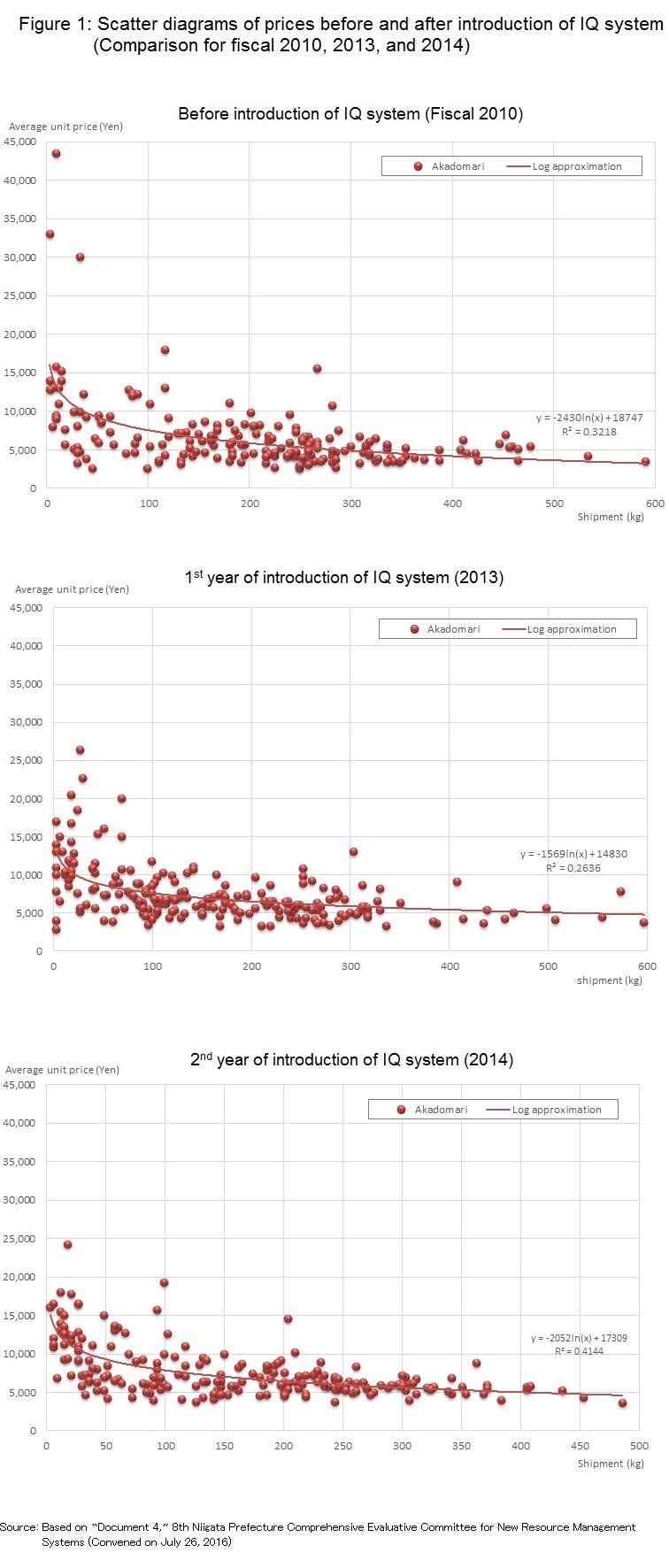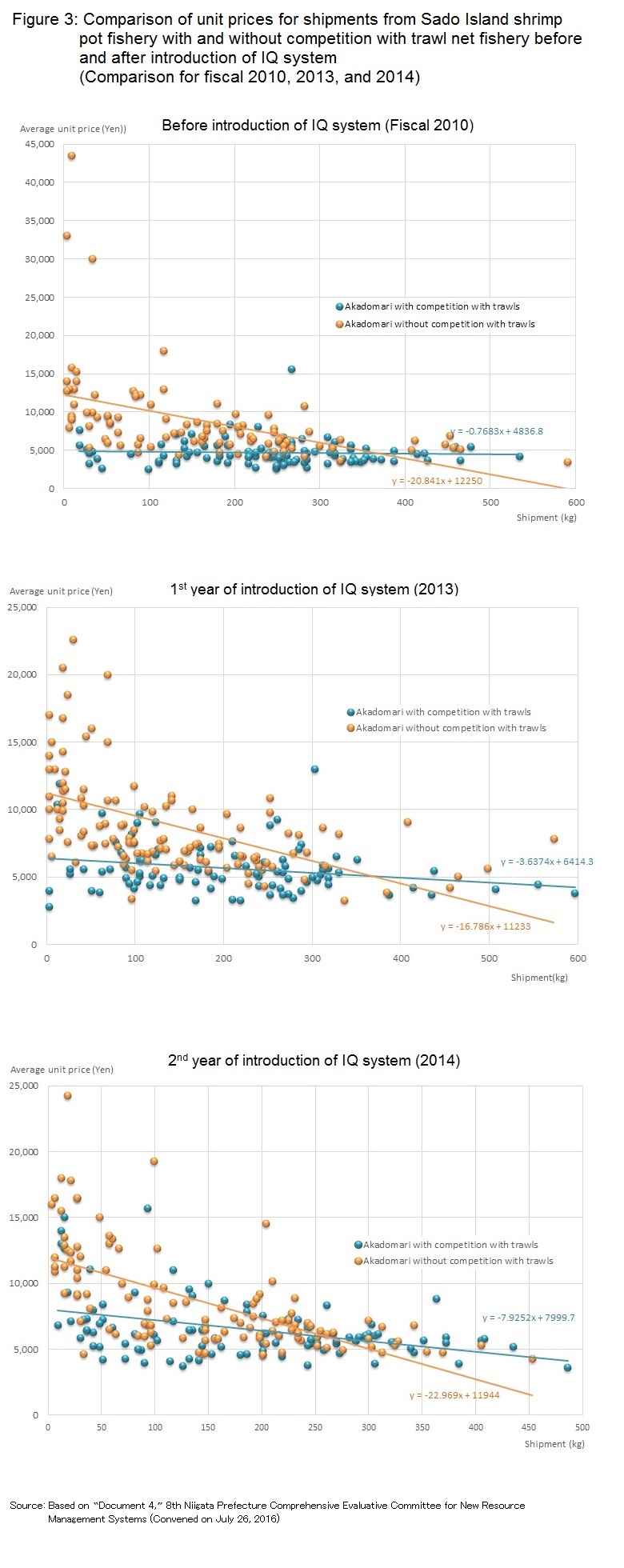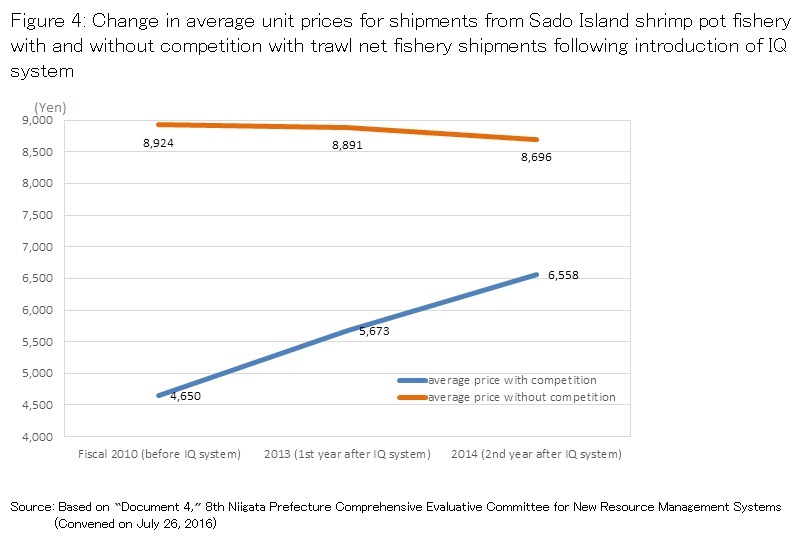 Unit06-A: Introduction of an Individual Quota (IQ) System in Japan’s Fishing Industry: An Economic Analysis
Unit06-A: Introduction of an Individual Quota (IQ) System in Japan’s Fishing Industry: An Economic Analysis
Kojun Hamada
Associate Professor
Faculty of Economics, Niigata University
Introduction
The decline of Japan’s fishing industry has long been a focus of attention. According to Fisheries Agency data, Japan’s catch has been steadily declining since its peak in 1984. The depletion of the nation’s fisheries resources by overfishing is considered to be a factor in the decline of Japan’s fishing industry. By contrast, in nations such as Iceland and Norway, which have implemented policies for the appropriate management of their fisheries resources, the fishing industry is a growth industry. In order to prevent overfishing and maintain its fisheries resources, it will be essential for Japan also to implement effective resource management measures. The individual quota (IQ) system is available as a method of effective management of fisheries resources, and it is one that is being implemented by nations throughout the world. Individual quotas enable management of fisheries resources by allotting a specific annual catch volume to each fishery operator or each vessel; exceeding the allotted catch volume is prohibited. Because the allotted catch is regulated, fisheries resources do not experience the tragedy of the commons. In addition, because the system allows fishery operators to take their allotted catch at any time, they are able to bring fish to the market when the price is highest, enabling economically rational operation.
Japan’s first real IQ system was introduced in 2011, targeting shrimp pot fishing of Alaskan pink shrimp in the Akadomari area of Sado Island, in Niigata Prefecture. This paper will conduct a comparison of market prices of Alaskan pink shrimp before and after the introduction of the IQ system in the Sado Island fishery to study changes in market prices and to determine whether the system is economically rational.
1. Merits and Demerits of IQ Systems
IQ systems can be considered to possess two main merits. The first of these is the fact that allotting each fishery operator a fixed catch does away with “Olympic fishing,” the competition to catch the most fish as quickly as possible. The second is that the system generates an economic incentive to catch the fish with the minimum expense and bring them to market at the highest price, thus promoting efficient operations. The demerits of the system are the potential for concealment and false reporting by operators who exceed their quota, and the issue of how to determine the quota itself. However, these demerits can be overcome by appropriate checking of the volume of fish brought to market, and by calculating the allocated quotas based on scientific measurement and management of the actual fishery resources. Major fishing nations such as Iceland and Norway have introduced IQ systems to considerable success
2. A Comparison of the Unit Price of Alaskan Pink Shrimp Before and After the Introduction of the Akadomari IQ System
2016 marks the sixth year since the introduction of an IQ system to the shrimp pot fishing industry of Akadomari on Sado Island. This section will compare the market prices of Alaskan pink shrimp under major brand names before and after the introduction of this ground-breaking system in order to gauge its economic effects. Figure 1 shows a scatter diagram of the volume of shipments of Alaskan pink shrimp from Sado Island under major brand names and unit prices of the shrimp before and after the introduction of the IQ system.
While three outliers can be observed in Figure 1 before the introduction of the IQ system, overall unit prices of shipments of shrimp from Sado Island have tended to increase since the introduction of the system. Figure 2 shows a graph of changes in the average unit prices of shipments from Sado Island, as calculated from this market price data.
Figure 2 shows that average unit prices have increased following the introduction of the IQ system. The average unit price of shipments from Sado Island was 6,711 yen per box in fiscal 2010, prior to the introduction of the system. This figure increased to 7,471 yen per box, an increase of 760 yen per box, in 2013, following the introduction of the IQ system. The unit price increased to 7,658 yen per box in 2014, the second year following the introduction of the system representing a further increase of 187 yen per box, and an increase of 947 yen per box against the average unit price prior to the introduction of the IQ system. These are comparisons of simple averages, but the elimination of the three high outliers prior to the introduction of the system results in a further increase in unit prices.
The fact that the introduction of the IQ system made it possible for shrimp fishers to operate in summer, when unit prices are high, can be considered to be one reason for the increase in average unit prices. In addition, it can also be conjectured that operation in the summer months prevents competition between pot fishing and offshore trawl-net fishing, with a consequent increase in the average unit price for the latter. Unit price data by month does show an increase in average unit prices for trawl-net fishing in July and August.
3. Effect of Avoidance of Competition in Increasing Unit Prices
One factor causing decline in prices for Alaskan pink shrimp shipped under major brands was the fact that shrimp caught by shrimp pot operators and shrimp caught by trawl net operators would be shipped to Niigata markets on the same day. Because it allots an annual catch to each fishery operator, the introduction of the IQ system possesses the merit of enabling operators to maximize their profit by choosing the months or weeks when unit prices are highest to make and ship their catch. Here, we will investigate whether or not the introduction of the system has made it possible to avoid decline in unit prices due to market competition.
Figure 3 shows a scatter diagram of market prices for shrimp shipped by Sado Island shrimp pot operators when they did and did not compete in the market with shrimp shipped by trawl net operators. Figure 4 shows a graph of average unit prices for the Sado Island shrimp pot catch before and after the introduction of the IQ system, calculated from market price data.
A comparison of average unit prices for shipments from Sado Island shrimp pot operators when the shipments compete with shipments from trawl net operators and when they do not, as shown in Figure 4, clearly indicates that average unit prices increase when there is no competition. This verifies the fact that avoidance of competition is linked to a steady increase in unit prices. In terms of the effect of introduction of the IQ system, there is a slight decline in average unit prices when there is no competition following the introduction of the system, but overall not a great deal of change. However, there is a significant increase in average unit prices when there is competition following the introduction of the IQ system. Given that there was almost no change in the actual number of days on which shrimp were shipped following the introduction of the system, it may be conjectured that the number of days of operation and shipment by shrimp pot operators in competition with trawl net operators declined with an increase in the number of days of operation during the summer months (when there is no competition), resulting in increased unit prices when there was competition.
4. Conclusion
This paper has discussed the results of a study of changes in the unit prices of Alaskan pink shrimp shipped under major brand names from the shrimp pot fishery of the Akadomari region of Sado Island following the introduction of an IQ system in Japan’s first attempt at the implementation of such a system. Data surveyed indicated that the average unit prices of shrimp shipped from the Sado Island fishery under major brand names tended to increase following the introduction of the system. Data for unit prices of shipments from the Sado Island shrimp pot fishery before the introduction of the system contained three outliers representing rapid increases in price at the end of the year and during the Golden Week holiday period. When these values were eliminated, the tendency towards increase in unit prices following the introduction of the IQ system became clearer.
Next, the nature of change in the status of competition between shipments from the Sado Island shrimp pot fishery and the offshore trawl net fishery following the introduction of the IQ system was studied in order to determine the reasons for the increase in unit prices following the introduction of the system. The results of this study indicated that following the introduction of the IQ system, there had been a significant increase in the average unit prices of shipments from the shrimp pot fishery when there was market competition with the trawl net fishery, while there had been a slight decline in average unit prices when there was no competition. It is conjectured that the reason for this increase in average unit prices following the introduction of the IQ system was that the introduction of the system had encouraged shrimp pot operation during the summer months, when unit prices were higher, and the number of days in which the shrimp pot catch was in competition with the trawl net catch had decreased as a result of shrimp pot operation in summer.
The results of this study demonstrate that by reducing competition with the trawl net fishery and allowing operation during summer, the introduction of an IQ system to the Sado Island Alaskan pink shrimp shrimp pot fishery realized the advantage of enabling shipments during the high-price, high-demand period. The system has the merit of providing fishery operators with an economic incentive to catch and ship as much as possible of their allotted volume of shrimp in the highest-priced period. The results demonstrating an increase in unit prices for shrimp discussed in this paper provide further support for the economic efficiency of the introduction of IQ systems. In Japan, where the depletion of fishery resources has long been a subject of discussion and the management of these resources is an urgent issue, the further application of IQ systems displaying this type of economic rationality holds great promise as a prescription for the revitalization of the nation’s fisheries.
<参考文献>
- Komatsu, Masayuki (2014), “Intabyu Nihon no shoku no mirai: File2 Gyogyou fukkatsu no shohosen (Interview: Japan’s Food Future (File 2): A Prescription for the Revitalization of Japan’s Fishing Industry),” Nikkei Business Online (June 10, 11, and 12, 2014). (In Japanese)
- Komatsu, Masayuki (2015), “Niigataken Sadoshima de nihonhatsu no honkakuteki “kobetsugyokakuwariateseido” wo donyu (Introduction of Japan’s First Fully-fledged Individual Quota System on Sado Island),” Niigata Prefecture, Shima, Vol.60(3), pp.30-41. (In Japanese)
- Ministry of Agriculture, “Forestry and Fisheries, Survey on Marine Fishery Production.” (In Japanese)(http://www.maff.go.jp/j/tokei/kouhyou/kaimen_gyosei/index.html)
- Takarada, Y. and Managi, S. (2010), Shigenkeizaigaku heno shotai: Kesu sutadhi toshiteno suisangyo (An Invitation to Resource Economics: Fisheries Case Studies), Minerva Shobo. (In Japanese)


